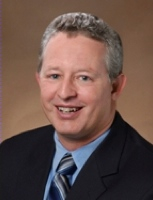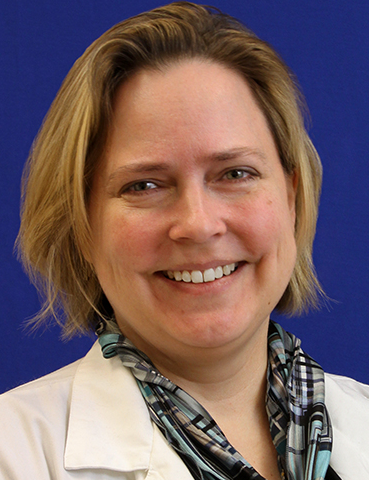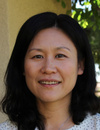Co-Located Conference AgendasCirculating Biomarkers World Congress 2020 | EV-based Diagnostics, Delivery & Therapeutics | 

Monday, 17 February 202008:00 | Conference Registration, Materials Pick-Up, Morning Coffee and Pastries | |
Session Title: Conference Opening Session -- Emerging Themes in Circulating Biomarkers and Exosomes/EVs |
| | |
Venue: Coronado Ballroom C |
| | 08:30 |  | Conference Chair Welcome and Introduction to the Conference
Michael Graner, Professor, Dept of Neurosurgery, University of Colorado Anschutz School of Medicine, United States of America
|
| 08:45 |  | Keynote Presentation Liquid Biopsies Using EVs: Promise and Peril on the Frontiers of a New Field
Jennifer Jones, NIH Stadtman Investigator, Head of Transnational Nanobiology, Laboratory of Pathology, Center for Cancer Research, National Cancer Institute, United States of America
|
| 09:15 |  | Keynote Presentation New Flow-Based Technologies for the High-Sensitivity and High-Resolution Analysis of CTCs and Exosomes
Daniel Chiu, A. Bruce Montgomery Professor of Chemistry, University of Washington, United States of America
This presentation will describe two flow-based technologies we developed for the analysis of single rare cells and individual extracellular vesicles. The first flow platform is a rare-cell isolation instrument we call eDAR (ensemble decision aliquot ranking), which is capable of operating in a rapid sequential sorting mode for isolating single rare cells with exceptionally high sensitivity and purity. The second flow instrument is a single-vesicle sorter, capable of high-sensitivity analysis of individual extracellular vesicles. I will outline the workings of these new tools, describe their performance, and discuss the clinical questions we are addressing with these next-generation technologies. |
| 09:45 |  | Keynote Presentation Circulating Tumor Cells Inform Mechanism of Breast Cancer Metastasis
Min Yu, Assistant Professor, University of Southern California, United States of America
Circulating tumor cells (CTCs) are expected to contain metastasis-initiating cells that can shed light on the mechanisms of cancer metastasis. However, due to limited patient-derived material, the metastatic capability of CTCs has yet to be proved. Using our recently established patient-derived CTC lines, we found that different patient CTC lines demonstrated distinct metastatic tissue tropisms in immunodeficient mice and identified associated pathways to specific organs via RNA-seq and ATAC-seq analysis. |
| 10:15 | Morning Coffee Break and Networking in the Exhibit Hall | 10:45 | Biofluid Biomarkers for the Brain
Kendall Van Keuren-Jensen, Professor and Deputy Director, Translational Genomics Research Institute, United States of America
We will describe some of our efforts in using exRNAs as diagnostics for central nervous system injury and disease. | 11:15 |  | Keynote Presentation Deciphering the Vesicle Code: Making Sense of EV Heterogeneity
John Nolan, CEO, Cellarcus Biosciences, Inc., United States of America
Cells release extracellular vesicles (EVs) that can carry molecular cargo, including lipids, proteins, and nucleic acids, to nearby or distant cells and affect their function. Understanding the mechanisms of EV biogenesis, uptake and transport has the potential to lead to new biomarkers, diagnostics, and therapeutics. A limit to realizing this potential is the ability to measure individual EVs and their cargo quantitatively and reproducibly. Conventional bulk biochemical analyses, which report only the total amount of cargo in an EV preparation, cannot effectively assess compositional heterogeneity. Single EV analysis methods are required, but conventional tools are challenged to accurately measure small, dim particles. We have developed a vesicle flow cytometry (vFC) method that can detect and size individual EVs to 70 nm, and measure surface cargo to ~25 molecules/EV. vFC allows the identification and characterization of vesicle sub-types within heterogeneous populations in culture supernatants of biofluids. Single EV analysis using vFC reveals striking differences in the expression of canonical vesicle cargo such as tetraspanins, as well as other surface markers including integrins, tumor markers, and carbohydrates on EVs in biofluids and even EVs collected from cultured cell lines. vFC-based single EV immunophenotyping will enable us to understand the origins and functions of EVs in much the same way cell-based immunophenotyping has enabled a detailed understanding of the immune system, and lead to a new generation of EV-based biomarkers, diagnostics, and therapeutics. |
| 11:45 |  | Keynote Presentation An Exosome-based Drug Delivery Platform Derived From an Immortalized Human Neural Stem Cell (hNSC) Line
Randolph Corteling, Head of Research, ReNeuron Ltd., United Kingdom
To ensure the scale required for clinical research and commercialisation
producer cell immortalisation and clonal isolation is a practical
strategy to produce consistent, functionally bioactive exosomes for use
as therapeutic agents. Immortalisation ensures production stability and
reduces the need for equivalence testing.
CTX0E03 is a
conditionally immortalised human neural stem cell line that has been
manufactured to clinical-grade (GMP) standards, using a 3-tier banking
strategy and is currently in Phase IIb clinical evaluation for
disability after stroke. Using the conditioned media produced during GMP
manufacture, we have shown that CTX0E03 is an abundant producer of
exosomes that can be readily isolated and purified at scale. The CTX
cell line can also be rapidly and efficiently modified to direct the
expression of a variety of cargoes within the secreted EV population,
whilst maintaining the key immortalised stem cell characteristics of the
parental cell line. The natural tissue tropism of CTX-derived exosomes
can then be exploited to deliver loaded cargoes to target cells. |
| 12:15 |  | Keynote Presentation Optimizing Dendritic Cell-Derived Exosomes For Cancer Immunotherapy
Susanne Gabrielsson, Professor, Division of Immunology and Allergy, Department of Medicine Solna, Karolinska Institutet, Sweden
Peptide loaded exosomes are promising cancer treatment vehicles,
however, low T cell responses in human clinical trials indicate a need
to further understand exosome-induced immunity. We previously
demonstrated that antigen-loaded exosomes carry whole protein antigens
and require B cells for induction of antigen-specific T cells. I will
discuss our latest data where we investigated the need for different
immune related molecules on exosomes to induce T cell responses and
tumor rejection in the B16 mouse melanoma model. Our data demonstrate
ways to increase the feasibility of exosome-based therapeutic approaches
in cancer. |
| 12:45 | Networking Lunch in the Exhibit Hall, Exhibits and Poster Viewing | |
Session Title: Luncheon Technology Spotlight Sponsored by Clara Biotech | Session Sponsors |
| | 13:15 | Luncheon Technology Spotlight Presentation: Advancements in Exosome Isolation: Impacts on Research and Therapeutic Development
Jim West, CEO, Clara Biotech, United States of America
Mei He, Assistant Professor, University of Kansas and Chief Science Officer, Clara Biotech, United States of America
Don’t miss this informative lunch session!
The newest technologies laying the groundwork for future exosome research and commercialization will be discussed, highlighting advancements that will have a far-reaching impact on this burgeoning space.
Exosome isolation, purification, yield and viability are critical to research, biomarker identification and therapeutic development. As the industry learns more, being able to focus on specific exosome subtypes is becoming increasingly important to this growing field.
This seminar will review current and future exosome isolation technologies and platforms, while also discussing their respective impacts on the molecular components of exosomes.
*** Every attendee will get an exclusive conference gift for attending this seminar *** | |
Session Title: Emerging Themes in the Various Circulating Biomarker Classes | | Session Chair: Shivani Sharma, Associate Director, California NanoSystems Institute, California NanoSystems Institute, UCLA, United States of America |
| | |
Venue: Coronado Ballroom A&B |
| | 14:00 |  | Keynote Presentation PIBEX: Automated Extraction of Circulating Biomarkers from Plasma
Sehyun Shin, Professor & Director, Nano-Biofluignostic Engineering Research Center, Korea University and Anam/Guro Hospital of Korea University, Korea South
|
| 14:30 |  Exosome Biomarkers: Multiparametric Characterization and Phenotypic Analysis Exosome Biomarkers: Multiparametric Characterization and Phenotypic Analysis
Clayton Deighan, North American Sales and Applications Manager, NanoFCM
Unlocking the full diagnostic potential of exosomes is dependent, in part, on the ability to accurately analyze these small particles, to acquire proteomic data on the single-exosome level, and to do both for rare events. ExoView is uniquely positioned to measure and characterize single exosomes of the smallest sizes. ExoView provides quantification, sizing, and protein expression information, including surface and luminal proteins, all without the need for sample purification. A custom panel can be built to assay up to 6 biomarkers of interest.
| 15:00 |  Phenotyping Extracellular Vesicles Using Tetraspanins and Fluorescence-NTA Phenotyping Extracellular Vesicles Using Tetraspanins and Fluorescence-NTA
Ross Jacobson, Technical Sales Leader, Particle Metrix, Inc.
Nanoparticle Tracking Analysis (NTA) measures size and concentration of nanoparticles in the size range from 10 nm to 1 µm. While getting a particle size distribution, the user typically cannot discriminate whether the particle is a vesicle, protein aggregate, cellular trash or an inorganic precipitate from scatter data alone. The fluorescent detection capability of NTA enables the user to gain biochemical information about the particle and increases the resolution and the discrimination power. NTA instruments traditionally are equipped with one laser wavelength in operation. This limits the detection of biomarkers to only a couple fluorescence dyes. To expand the number of excitation wavelengths, it was necessary to change of the laser source, a time and sample consuming step. To overcome this issue Particle Metrix developed a unique QUATT laser technology and now allows the rapid analysis of biomarker concentrations or ratios with four excitation lasers on the same sample. Here we report the quick and easy EV Phenotyping via multi-wavelength f-NTA on the new Particle Metrix four laser system. Alignment-free switching between excitation wavelengths and measurement mode (scatter and fluorescence) allows quantification of biomarker ratios such as Tetraspanins (CD63, CD81, CD9 and CD41) on the same sample within minutes reducing measurement time and precious sample volumes.
| 15:30 | Afternoon Coffee and Tea Break Plus Networking | 16:00 |  Isolation and Characterization of Extracellular Vesicles; An Integrated, High-Precision and Standardizable Approach Isolation and Characterization of Extracellular Vesicles; An Integrated, High-Precision and Standardizable Approach
Shayne Harrel, Chief Scientist-Americas, Izon Science US LTD
Tremendous interest exists towards the development and implementation of extracellular vesicles (EVs) in bio-fluids as rich sources of diagnostic and prognostic biomarkers. EVs derived from bio-fluids exhibit extensive heterogeneity with regards to particle size, concentration, membrane composition and cargo resulting in unique challenges in terms of EVs isolation and characterization. We present an approach to purify EVs from complex bio-fluids using Izon’s qEV line of size exclusion chromatography (SEC) based columns, resulting in a highly pure and unperturbed sample. Reproducibility and standardization is enhanced by incorporating Izon’s Automated Fraction Collector (AFC) into the isolation. Tunable Resistive Pulse Sensing (TRPS) is used to characterize the biophysical properties (size, concentration and Zeta Potential) of purified EVs. TRPS measurements are conducted at the single particle level and results are compared against a known standard, ensuring the accuracy, repeatability and traceability of the data.
| 16:30 |  Novel Methods For EV Isolation and Their Use in a Pilot Liver Disease Biomarker Discovery Study Novel Methods For EV Isolation and Their Use in a Pilot Liver Disease Biomarker Discovery Study
Shannon Pendergrast, Chief Scientific Officer, Ymir Genomics
We will describe several novel products and methods for the rapid and effective isolation of biofluid extracellular vesicles (EVs). Also, the use of one such method to discover novel EV-associated urine biomarkers for liver disease will be presented.
| 17:00 |  Stem Cell Extracellular Vesicles as a Novel Therapy for Age-related Tendinopathy Stem Cell Extracellular Vesicles as a Novel Therapy for Age-related Tendinopathy
John Ludlow, Executive Director, Regenerative Medicine, Zen-Bio, Inc.
Aging is the principal risk factor associated with tendinopathy and also
contributes to a significant decrease in the ability to efficiently
heal chronic tendon injury by altering the complex and highly
coordinated processes required for normal resolution. In addition to
increases in lifespan and a growing aging population that is remaining
active, there is a concomitant rise in the prevalence of comorbidities
and tendinopathy risk factors such as obesity and diabetes. These
factors have led to a very high prevalence of tendon injuries in those
over 60 years of age, reaching 50% of this population, resulting in
decreased quality of life and an economic burden in the billions of
dollars. The use of biological and stem cell therapies for tendon
healing and repair have been widely investigated and have demonstrated
some potential for soft tissue regeneration. Secreted extracellular
vesicles (EVs), such as exosomes, are packed with potent pro-repair
proteins and RNA cargos that are both cell type-specific, as well as
differentially produced and secreted according to the cellular
environment. We have demonstrated that mild heat shock improves the
repair activity of stem cell-derived EVs in vitro and in vivo. By
manipulating the cellular environment, we have found that we can alter
stem cell EV production and secretion. Our results have validated an
approach of manipulating the cellular environment in a closed-system
bioreactor to modify the bioactive cargo of secreted EVs for improved
tendon healing. This presentation will describe the further development
of our pro-healing EV therapeutic approach to treat tendon injuries and
tendinopathy specifically afflicting the elderly.
| 17:30 | Extracellular Vesicles Spread Neurotoxicity in Amyotrophic Lateral Sclerosis
Davide Trotti, Professor, Scientific Director, Weinberg ALS Center, Vickie and Jack Farber Institute for Neuroscience, Thomas Jefferson University, United States of America
| 18:00 | A Multi-Dimensional Approach to EV Flow Cytometry
Andries Zijlstra, Associate Professor of Pathology, Microbiology and Immunology, Vanderbilt University Medical Center and Vanderbilt Ingram Cancer Center, United States of America
Flow cytometry has proven to be very promising method for Single-EV
analysis. Unfortunately, the heterogeneity of EV populations prevents
the application of the single-particle classification strategy derived
from conventional flow cytometry of intact cells fails in our attempts
to resolve distinct classes of EVs. In simple terms, the small size of
most EVs prevents the incorporation of all protein markers that define a
uniform class of EVs. Consequently, EVs generated through the same
biogenesis pathway from the same donor cells, could contain vastly
different cargo. Conversely, restricting EV classification only to a
size range is equally limiting. To improve EV sub-classification and
enable the identification of biologically-significant alterations in EV
populations in response to alterations in physiological or pathological
states of the donor cell/tissue, we have developed a multi-dimensional
approach to EV flow cytometry that attempts to cluster EVs into
subpopulations on the basis of many, rather than single parameters. | 18:30 | Networking Reception with Beer, Wine and a Buffet Dinner in the Exhibit Hall | 19:30 | Close of Day 1 of the Main Conference | 19:40 | Exosomes-EV Training Course in Ballroom A&B [Separate Registration Required to Attend this Training Course] |
Tuesday, 18 February 202008:00 | Morning Coffee, Tea and Pastries in the Exhibit Hall | |
Session Title: The Study of Various Classes of Circulating Biomarkers -- Challenges and Opportunities in the Field |
| | |
Session Chair: Professor Michael Graner, UC-Anschutz Medical Center |
| | |
Venue: Coronado Ballroom A&B |
| | 08:30 | Applying Phage-Displayed Random Peptide Libraries to Identify Exosomes as Biomarkers in Patients with Central Nervous System Disorders
Xiaoli Yu, Assistant Professor, Department of Neurosurgery, University of Colorado Anschutz Medical Campus, United States of America
Like most other cells, brain tumor cells shed extracellular vesicles (EV) into their external environment and are considered potentially high-value biomarker reservoirs. We hypothesize that phage-displayed random peptide libraries can be applied to identify EV of CNS origin, and high affinity phage peptides can be used for rapid isolation and characterization of extracellular vesicles from blood of patients with brain tumors. Phage display has been successfully applied to many different areas of research, including immunology, cancer, drug discovery, epitope mapping, protein-protein interactions, and infectious diseases, targeting a broad cross section of protein families. Phage display technology is based on the construction of a polypeptide library fused to a bacteriophage coat protein. Phage are screened (“panned”) on surfaces coated with potential targets. We have applied two Phage-display peptide libraries (7mer &12 mer) and identified high affinity peptides specific to exosomes derived from brain tumor cell-lines and plasma of patients with other CNS disorders. The peptides shared high sequence homologies within the ones selected by the same panning targets as well as with others panned by exosomes from different sources. Our data suggest that phage peptide technologies can be used for enrichment, isolation, and characterization of EVs derived from different CNS cell types from blood of brain tumor patients and other CNS disorders. | 09:00 |  | Keynote Presentation Abundance of Tumor Related Mutations in High Molecular Weight cf-DNA Isolated from PDAC Cancer Patient Plasma Samples
Michael Heller, Professor, Dept Bioengineering, University of California-San Diego, United States of America
The availability of enough tumor related cell free (cf) DNA in patient blood samples could be a limitation for viable early cancer detection. Presently, next generation sequencing techniques focus on the detection of mutations in the smaller (<200bp) cancer related apoptotic cf-DNA fragments. We now have considerable evidence that cancer related mutations are also present in the higher molecular weight (>200bp) cf-DNA, which is often found at elevated levels in cancer patient blood samples. Use of a new electrokinetic chip device allows isolation and multi-omics analysis of the exosome protein biomarkers, as well as the high molecular weight (hmw) cf-DNA present in the “same” 50 µL blood, plasma or serum sample. The exosome protein biomarkers are first detected directly by on-chip immunofluorescent analysis. Subsequently, the hmw cf-DNA is eluted from the chip, whereupon digital PCR (dd-PCR), PCR and sequencing analysis is conducted to identify cancer-related point mutations. In a blinded pancreatic ductal adenocarcinoma cancer (PDAC) patient study, we were able to show correlation of elevated levels of glypican-1 and cf-DNA in PDAC positive samples, with the presence of KRAS mutations in hmw cf-DNA as determined by digital PCR and Sanger sequencing. These results provide support that a relatively large percentage of the hmw cf-DNA in the patient blood/plasma is coming from the tumors. Since low copy number of tumor related cf-DNA may be a limitation for early detection, the fact that the mutations exist in the hmw cf-DNA could be very important. This would of course have considerable implications for NGS, which preferentially tends to focus on mutation detection in the smaller cancer related apoptotic cf-DNA fragments. We now envision a future strategy for Multi-Omic analysis with on-chip exosome biomarker detection and PCR amplification, with option to do dd-PCR, Sanger sequencing and/or more encompassing NGS mutation and epigenetic analysis. The goal is to provide seamless sample-to-answer point-of-care liquid biopsy diagnostics, therapy monitoring and ultimately early cancer detection from a small sample of patient blood. |
| 09:30 |  Highly Sensitive Direct Quantification of cf-microRNAs for Biomarker Profiling by Next Generation Sequencing (NGS) Highly Sensitive Direct Quantification of cf-microRNAs for Biomarker Profiling by Next Generation Sequencing (NGS)
Sergio Barberan-Soler, CEO, RealSeq Biosciences
Cell-free circulating microRNAs (cf-miRNAs) are promising diagnostic and prognostic biomarkers for cancer and other diseases. cf-miRNAs are highly stable in biofluids and are therefore attractive as potential biomarkers via NGS-based detection compared to circulating DNA and protein markers. However, NGS detection of cf-miRNAs suffers from a high level of incorporation bias when sequencing libraries are prepared using the most widely used commercial kits. SomaGenics RealSeq library prep platform addresses this issue, with proven best-in-class accuracy of detection. The RealSeq platform includes a kit designed to profile miRNAs from biofluids (RealSeq-Biofluids) that typically detects four times as many cf-miRNAs as commercially available technologies. The latest kit in the RealSeq platform is RealSeq-T, the first targeted sequencing approach to detect panels of cf-miRNAs (up to 1,200) directly from plasma, with no organic extraction needed. Nearly 95% of sequenced reads from RealSeq-T libraries mapped to the miRNA panel. With these new capabilities, the RealSeq platform should advance the prospects of cf-miRNAs as clinical biomarkers.
| 10:00 | Sequencing of cfDNA to Monitor Treatment Response in Cancer Patients
Taylor Jensen, Director, Research and Development, Sequenom (a LabCorp Company), United States of America
| 10:30 | Networking Coffee Break in the Exhibit Hall -- Visit Exhibitors and View Posters | 11:00 | CSF Based New Generation Molecular Diagnostics: Improving Sensitivity and Actionability
Santosh Kesari, Founder, Pacific Neuroscience Institute, United States of America
| 11:30 | Isolation of Human Urine Exosomes: Potential Markers For Disease Conditions
Antonio De Maio, Professor, University of California-San Diego, United States of America
The role of exosomes or extracellular vesicles as mediators of intercellular communication has gained a great deal of attention, particularly within pathological conditions. In addition, interest in them has emerged as potential biomarkers of pathological conditions. Exosomes have been detected in a variety of bodily fluids, such as blood, saliva, and urine. The study of exosomes in urine samples is ideal for the detection of disease markers because they can be easily obtained in abundant quantities in a non-invasive and painless fashion. We have systematically optimized the collection of human urine samples for the isolation of exosomes by differential centrifugation, including the time of collection, reproducibility, and conditions for storage. We have observed that glycoproteins within the membrane of exosomes provide a specific pattern in healthy individuals that opens the possibility that alteration in their presence may result in a disease signature. Based on this investigation, we are in conditions to evaluate the use of urine exosomes as markers for a variety of diseases. | 12:00 | The Use of Vesicles from Cow Milk for Oral Drug Delivery
Tom Anchordoquy, Professor, University of Colorado Skaggs School of Pharmacy and Pharmaceutical Sciences, United States of America
Many pharmaceuticals must be administered intravenously due to their
poor oral bioavailability. In addition to issues associated with
sterility and inconvenience, the cost of repeated infusion over a
six-week course of therapy costs the healthcare system tens of billions
of dollars per year. Attempts to improve oral bioavailability have
traditionally focused on enhancing drug solubility and membrane
permeability, and the use of synthetic nanoparticles has also been
investigated. As an alternative strategy, some reports have clearly
demonstrated that exosomes from cow milk are absorbed from the
gastrointestinal tract in humans, and could potentially be used for oral
delivery of drugs that are traditionally administered intravenously.
Our results demonstrate that milk exosomes are absorbed from the gut as
intact particles that can be modified with ligands to promote retention
in target tissues. | 12:30 | CD200-Expresson on Vascular Endothelial cells is Mediated Through VEGF
Michael Olin, Associate Professor, University of Minnesota Masonic Cancer Center, United States of America
Central nervous system tumors are the number one killer of children with cancer. Among those, glioblastoma multiforme (GBM) is an incurable primary brain tumor. The standard of care consists of resection followed by radiation and chemotherapy using temozolomide and is associated with a median overall survival of 14.6 months. To overcome this dismal outcome, clinicians are turning to immunotherapy approaches, which have demonstrated promising results in other solid tumors. However, immunosuppression by the tumor microenvironment prohibits a durable anti-tumor response and the optimization of immunotherapy, especially in GBM. Tumors have capitalized on immune regulatory mechanisms that facilitate the inhibition of an immune response. The CD200 checkpoint includes the tumor-bound protein CD200 and its inhibitory receptor. We recently reported that CD200 is also expressed on tumor vascular endothelial cells and that this expression is upregulated by VEGF, creating an immunological barrier around the tumor microenvironment. CD200 is also shed by tumors, and it has been reported that this soluble CD200 interacts with its inhibitory receptor restricted to immune cells to create an immunosuppressive environment. However, as extracellular proteases are abundant in the sera, it is highly probable for the soluble CD200 to be degraded. We hypothesis is that tumor-derived extracellular vesicles modulate CD200-induced immunosuppression. There is abundant evidence in the literature that extracellular vesicles derived from tumors suppress antigen-specific and non-specific anti-tumor responses, mediating a broad array of detrimental effects on the immune system. We now know that tumor-derived extracellular vesicles contain CD200 and VEGF. In addition, others have reported that miR-150, which plays a role in tumorigenesis, interacts with TAMs to induce VEGF, suggesting a link between tumor-derived extracellular vesicles, and the upregulation of C200. We propose i) CD200-expressing tumor-derived extracellular vesicles induce immune suppression, ii) VEGFpos-tEVs upregulates CD200 on vascular endothelial cells and/or iii) miR150 interaction with tumor associated macrophage upregulate CD200 on vascular endothelial cells maintain an immune suppressive tumor microenvironment. | 13:00 | Networking Lunch in the Exhibit Hall | |
Session Title: Single EV Analysis Workshop Sponsored by Cellarcus and Beckman-Coulter | Session Sponsors |
| | 13:05 | Single EV Analysis Workshop -- Principles of EV Analysis
John Nolan, CEO, Cellarcus Biosciences, Inc., United States of America
Attend an on-site workshop covering principles of EV analysis. This 60 minute session will describe guidelines for rigorous EV characterization including an overview of current methods, considerations and controls for generating interpretable data, and a discussion of published guidelines including the new MIFlowCyt-EV manuscript. The workshop will conclude with a hands-on EV analysis lab demonstrating methods for standardized, reproducible measurement of EV size, concentration and cargo by flow cytometry. | |
Session Title: Late-Breaking Session -- This Session Brings Together Some of the Latest Research in the Circulating Biomarkers, EV Dx/Rx Field |
| | |
Session Chair: Professor Michael Graner, UC-Anschutz Medical Center |
| | |
Venue: Coronado Ballroom A&B |
| | 14:00 | Exosomal Carboxypeptidase E Confers and CPE-shRNA Loaded Exosomes Inhibit Tumorigenesis
Y. Peng Loh, Chief and Senior Investigator, Section on Cellular Neurobiology, Eunice Kennedy Shriver National Institute of Child health and Human Development, National Institutes of Health (NIH), United States of America
Carboxypeptidase E (CPE) has many extracellular non-enzymatic functions including its ability to promote cancer growth and metastasis. Exosomes carry biomolecules (proteins, DNA, mRNA and miRNA) unique to their cell of origin and deliver them to recipient target cells thereby mediating cell-cell communication. We have explored the ability of exosomes from high metastatic HCCH (liver cancer) cells to confer growth and metastatic properties to HCCL (low metastatic). Exosomes were isolated from the supernatant culture media of cancer cells and a correlation was found between elevated CPE mRNA levels in exosomes from high vs low metastatic cell lines across various cancer types. Content analysis of exosomes derived from highly metastatic HCC97H cells revealed CPE-WT mRNA and protein. We showed that exosomes released from HCC97H cells were able to enhance invasion of HCC cells with poor metastatic ability (HCC97L) in Matrigel invasion assay and proliferation in MTT assay. However, when CPE expression was suppressed in the HCC97H cells before exosome isolation, the exosomes had no effect on proliferation and invasion. These data demonstrate the ability of exosomes to confer metastasis in cancer cells and the role of exosomal CPE in driving the process. We then utilized the inherent property of exosomes to act as efficient delivery tools to carry a therapeutic agent such as shRNA. Previously it was shown that down-regulation of CPE expression by shRNA can reverse tumor growth and metastasis in an HCC mouse model. We therefore loaded CPE-shRNA into exosomes by infecting HEK293 (Human Embryonic Kidney) cells with adenovirus carrying CPE shRNA-GFP. These modified exosomes were harvested from the cell medium, purified and then used to transfer CPE-shRNA to HCC97H cells. The exosomes taken up by the recipient cells resulted in significant reduction of CPE mRNA levels and decrease in colony formation of these cells. Thus, these studies demonstrate the ability of exosomal CPE to enhance invasion in low metastatic HCC cells and the potential to use shRNA loaded exosomes to target CPE as a therapeutic strategy to treat liver and other cancers. | 14:30 | EV Engineering For Biomedical Applications
Samir EL-Andaloussi, Associate Professor, Karolinska Institutet, Sweden
Joel Nordin, Research Fellow, Karolinska Institutet, Sweden
The presentation will describe work-flows for scalable purification of
bioengineered EVs, down-stream vesicular analytics and application of
such EVs in therapeutic contexts. | 15:00 | Capturing Heterogeneous Circulating Tumor Cells in Breast and Lung Cancer Using Nanotube-CTC-Chip
Balaji Panchapakesan, Professor, Department of Mechanical Engineering, Worcester Polytechnic Institute (WPI), United States of America
The ability to detect cancer and its heterogeneity non-invasively in the earliest of stages can make a significant clinical impact. Therefore, biopsy of blood and other bodily fluids also called “liquid biopsy” is an emerging concept for non-invasive detection and capture of circulating tumor cells. Circulating biomarkers is a rapidly growing field of research. Circulating biomarkers include, circulating tumor cells (CTCs), exosomes, circulating tumor DNA (ctDNA), cell-free DNA and RNA (mRNA, miRNA, non-coding RNA, and other RNAs), circulating proteins and metabolites. However, the clinical impacts of liquid biopsy are yet to be realized. We describe the nanotube-CTC-chip for capture and analysis of heterogeneous circulating tumor cells. Using a micro-array technology, well established in the clinical domain, and utilizing nanosurfaces, we demonstrate the capture and isolation of invasive CTCs and CTCs of multiple phenotypes in breast and lung cancer patients. | 15:30 | Integrated Microfluidic Systems for the Efficient Isolation of Circulating Leukemia Cells and Circulating Plasma Cells
Steve Soper, Foundation Distinguished Professor, Director, Center of BioModular Multi-Scale System for Precision Medicine, The University of Kansas, United States of America
Malgorzata Witek, Associate Research Professor, The University of Kansas, United States of America
Liquid biopsies are generating great interest within the biomedical community due to the simplicity for securing important biomarkers to manage complex diseases. We are developing a suite of microfluidic devices that can process whole blood directly and engineered to efficiently search for a variety of disease-associated liquid biopsy markers and their subsequent molecular analysis. One microfluidic device can isolate targets with recovery >90% and high purity (>80%) to enable downstream analysis of the particular biomarker without requiring single cell picking. We have also developed a microfluidic device for imaging single cells. The aforementioned microfluidic devices can be interfaced to a fluidic motherboard to allow for full process automation, including cell selection from blood and then, immunophenotyping and/or FISH of the isolated cells. In this presentation, information will be shared on the operational parameters of these devices for the selection of liquid biopsy markers, and the downstream molecular information that can be garnered from the isolated markers in acute myeloid / acute lymphoblastic leukemia (circulating leukemia cells) and multiple myeloma (circulating plasma cells). The attractive nature of using liquid biopsy markers for these two diseases is that it circumvents the need for a patient to undergo a painful bone marrow biopsy. Information will be provided as to the use of these liquid biopsy markers to monitor relapse from minimum residual disease, and stage patients for directing therapy. | 16:00 | Linking Pain-Regulated Exosomal-miRNAs to Target Expression in the Brain
Natasha Sosanya, Staff Scientist, USAISR, United States of America
Nerve injury in male rats results in differential expression (DE) of circulating exosomal-miRNAs (ex-miRNAs). The DE ex-miRNAs affect target expression and signaling pathways that contribute to the development of neuropathic pain. | 16:30 | A Platform for Detecting Tumor-Derived Extracellular Vesicles
Lydia Sohn, Almy C. Maynard and Agnes Offield Maynard Chair in Mechanical Engineering, University of California-Berkeley, United States of America
Thomas Carey, Graduate Student Researcher, UC Berkeley, United States of America
| 17:00 | Close of Day 2 of the Conference |
|


 Add to Calendar ▼2020-02-17 00:00:002020-02-18 00:00:00Europe/LondonCirculating Biomarkers World Congress 2020Circulating Biomarkers World Congress 2020 in Coronado Island, CaliforniaCoronado Island, CaliforniaSELECTBIOenquiries@selectbiosciences.com
Add to Calendar ▼2020-02-17 00:00:002020-02-18 00:00:00Europe/LondonCirculating Biomarkers World Congress 2020Circulating Biomarkers World Congress 2020 in Coronado Island, CaliforniaCoronado Island, CaliforniaSELECTBIOenquiries@selectbiosciences.com